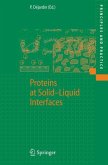An early view of eukaryotic chromosomes was that of static structures, which stored DNA not in use within a given cell type. It was thought that packaging of DNA into higher levels of chromatin structure would suffice to repress gene expression and that the challenge to the cell would be to rescue specific sequences from these structures. The exten sive packaging of inactive DNA was considered the primary difference between eukaryotic and prokaryotic genomes and except for that point both would be similarly regulated by cis-acting sequences and trans acting factors. Our view of eukaryotic chromosomes has evolved dra matically over the last decade. The picture of chromosomes that is emerging is that of dynamic breathing organelles actively regulating the flow of genetic information from the genome. Indeed chromatin is so fluid that even maintaining gene quiescence is an active process and is tightly regulated. Chromatin dynamics is a consequence of protein complexes that modify histones, remove histone modifications, mobi lize nucleosomes or stabilize nucleosomes. Awide variety of such com plexes have now been described. Some are abundant and may play glo bal roles in chromosome fluidity and function. Others are more rare and specialized for specific functions at discreet loci. Moreover, several complexes share biochemical activities and genetic studies suggest overlapping functions in vivo. Many components of these complexes were first revealed in genetic screens, while others were discovered by novel cell biological or biochemical approaches.
Hinweis: Dieser Artikel kann nur an eine deutsche Lieferadresse ausgeliefert werden.
Hinweis: Dieser Artikel kann nur an eine deutsche Lieferadresse ausgeliefert werden.
From the reviews:
"This volume of Current Topics in Microbiology and Immunology entitled 'Protein Complexes that Modify Chromatin' takes the reader on a detailed voyage through chromatin. ... The book is divided into ten chapters, each contributed by experts in the field of chromatin. ... presents a detailed overview of the protein complexes that associates with chromatin. ... is a great reference for researchers who are specifically interested in chromatin and its associated proteins."(Yassmine Akkari, The Journal of the Association of Genetic Technologists, Vol. 30 (1), 2004)
"This book provides timely reviews of several protein complexes that regulate gene expression and chromatin dynamics. Examples of such complexes include nucleosome assembly complexes, ATP-dependent chromatin remodeling complexes ... . These chapters will bring experts in the field up to date on several aspects of chromosome biology and will provide an exciting introduction to the field for new chromatin researchers." (Journal of Investigational Allergology & Clinical Immunology, Vol. 13 (3), 2003)
"This volume of Current Topics in Microbiology and Immunology entitled 'Protein Complexes that Modify Chromatin' takes the reader on a detailed voyage through chromatin. ... The book is divided into ten chapters, each contributed by experts in the field of chromatin. ... presents a detailed overview of the protein complexes that associates with chromatin. ... is a great reference for researchers who are specifically interested in chromatin and its associated proteins."(Yassmine Akkari, The Journal of the Association of Genetic Technologists, Vol. 30 (1), 2004)
"This book provides timely reviews of several protein complexes that regulate gene expression and chromatin dynamics. Examples of such complexes include nucleosome assembly complexes, ATP-dependent chromatin remodeling complexes ... . These chapters will bring experts in the field up to date on several aspects of chromosome biology and will provide an exciting introduction to the field for new chromatin researchers." (Journal of Investigational Allergology & Clinical Immunology, Vol. 13 (3), 2003)







